Average sizes and life expectancy for this breed:
A native from Northern France, the Beauceron is a shorthaired herding breed. They were initially bred as guarding and herding dogs and served several purposes: protecting their property and their families, driving flocks, and as reliable canine companions. This is a large breed that is athletic, versatile, and active.
Beaucerons are highly intelligent and high-energy. Therefore, this breed may not be the best match for first-time dog owners as they need regular daily exercise and mental stimulation. Moreover, they need an outlet for their high energy. So, daily walks are a must, as well as the freedom to run in a large backyard or garden.
These protective canines make good watchdogs and guardians. They have a strong dominant streak so they need an owner that can be firm and consistent with training. If trained properly, with a lot of love and patience, the Beauceron can become an ideal canine companion. It is worth noting that this breed can be territorial around other pets, so careful introductions are essential.
The Beauceron will thrive on a farm or in a home with a large, well-fenced yard so they can run around whenever they want. These active dogs are not really suitable for apartment living.
If you have an active lifestyle and are looking for a robust, loyal, and energetic companion, the Beauceron may be the breed for you.
See available puppies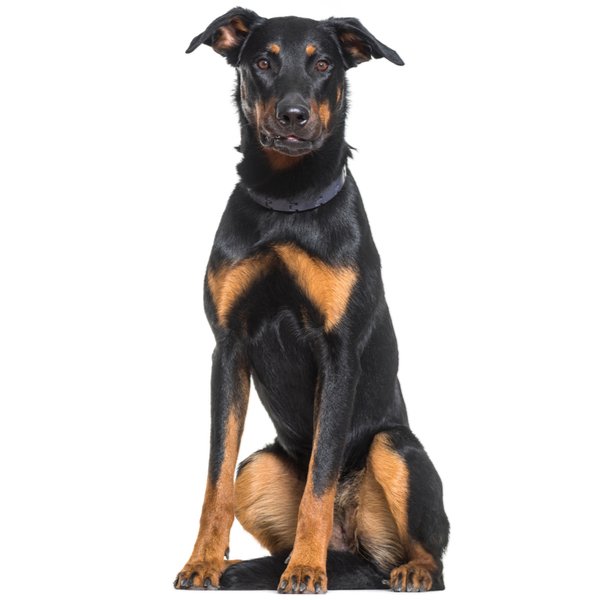

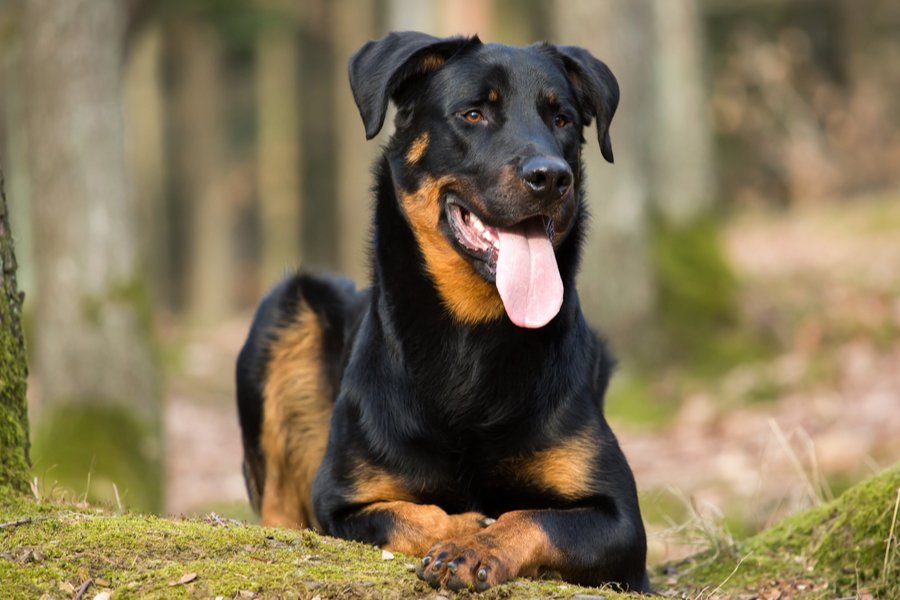


The Beauceron, originally known as the ‘Berger de Beauce’, is an ancient French breed that first appeared around the 1500s. The first written record of the Beauceron dates back to 1578. Originating in the Beauce region that lies around Paris, this breed was solely developed with no foreign crosses added into the mix. This means that the Beauceron is one of the “purest” and most natural European breeds. They are also the largest known French sheepdog breed.
These dogs were bred as guardians and herders. However, they were also described as “general purpose” dogs with a natural instinct and ability to protect flocks of cattle and sheep, as well as their properties and families. They are closely related to their long-haired cousins, the Briard or Berger de Brie. In fact, it wasn’t until 1809 that the distinct differences between the two breeds were first described by Abe Rosier.
The Société Central Canine was founded in 1882 with the first Beauceron, named Bergere de la Chappelle, registered in 1893. At the end of the century, Pierre Megnin started to establish a breed standard with the help of Emmanuel Ball. In 1922, the Club des Amis du Beauceron was established.
During the First and Second World Wars, the French military used Beaucerons in military operations because of their intelligence and eagerness to learn. Known to follow commands without hesitation, this made them valuable assets for the military, especially to send messages along the frontline. However, they were also utilised to track down people, guard military posts, and detect landmines.
During the 1960s, the French Ministry of Agriculture made laws to protect the Beauceron due to the continuous depletion of their numbers caused by the introduction of modern farming methods. But thanks to the adaptability and versatility of the Beauceron, they soon became a popular choice as a family pet and canine companion in their native France. Over the years they have been utilised in various roles including search and rescue operations, police workers, sporting companions, and as handicapped assistance workers. The breed standard was updated for the 5th time in over 100 years in 1965 and again in 2001.
While the Beauceron had arrived on British shores before, this breed was reintroduced in 1995, and the first Beauceron was exhibited at a Westminster Kennel Club event only in 2008. Today, this dog breed remains relatively unknown in the United Kingdom. But with more and more information available over the internet, Beauceron numbers are gradually rising.
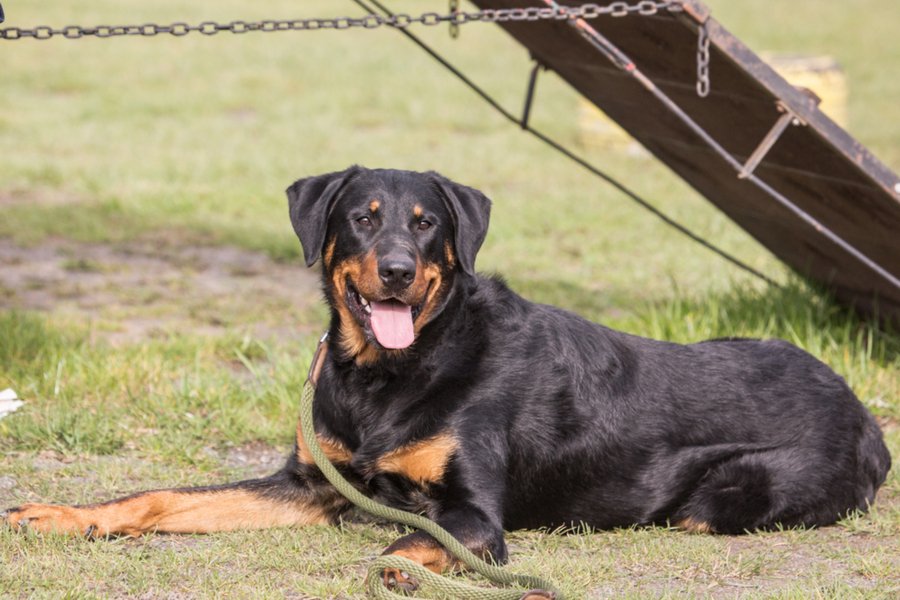
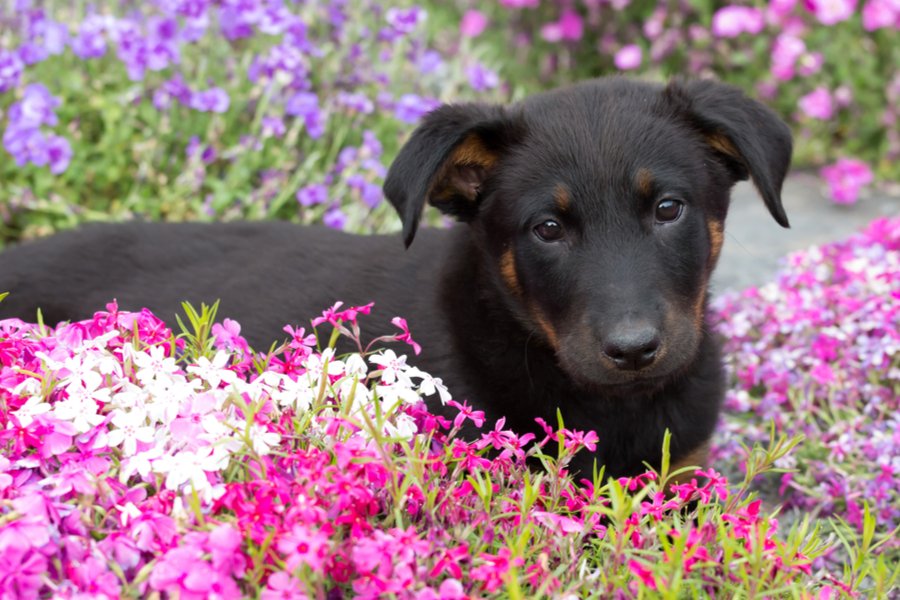
A handsome and noble-looking dog, the Beauceron is a large breed that boasts a glossy black and tan coat that is comparable to a Dobermann. They are incredibly muscular, sturdy, and solid dogs, free from excessive heaviness.
The Beauceron’s head is well-proportioned to the body. The skull is flat or slightly rounded, with a little bit of a furrow between the eyes. Their occiput is well-defined and has a moderate stop about halfway between the occiput and the tip of the nose. Their strong muzzles are dark, and their medium-sized eyes are oval-shaped with well-pigmented rims.
Their ears are set well on the head and dropped. They have strong jaws with a perfect scissor bite. The neck is extremely muscular and merges smoothly into the shoulders. Their powerful shoulders have nice angulation with well-defined withers and briskets that reach down to their elbows. The chest is broad, and they have muscular, strong front legs that display a moderate amount of bone.
The Beauceron’s body is well-muscled and firm. They have level backs and long, well-sprung ribs. Their extremely well-muscled loins are broad. Their hindquarters slope slightly to the base of the tail. Female Beaucerons are somewhat longer in the body compared to their male counterparts. Their back legs are powerful, strong, and well-muscled, and have double dewclaws set close to their back feet. Their strong feet are round with black nails and hard yet supple paw pads. The tail is carried low but straight.
These dogs have thick double coats consisting of short hair on the head but rougher and much coarser on the body. They have small breeching under the tail and on the back of the thighs. Their soft undercoat is short, fine, and dense. It is generally light grey in colour but must not show through the topcoat according to the UK breed standard. Accepted coat colours for the Kennel Club registration are black and tan, and harlequin (grey and black patches).
Known for their calmness, intelligence, and gentleness, despite their high energy and love for the outdoors, Beaucerons enjoy being in a family environment. They are athletic, agile, and courageous with a somewhat serious demeanour. They are highly devoted to their families but can be cautious around people they don’t know. For this reason, they need to be socialised from a young age.
It is worth noting that this dog breed may not be the best choice for first-time dog owners because they require lots of attention and training. It’s almost impossible to tire out a healthy Beauceron! For those who know how to handle and train a Beauceron, they can be wonderful family pets and canine companions. They will thrive with a family that has an active lifestyle, aand most importantly, a household where a person can remain at home for most of the day because these dogs are known to suffer from separation anxiety.
These high-energy dogs have a high prey drive. They are very quick on their toes when it comes to chasing down anything that tries to run away from them. So, extra care should be taken whenever you walk them outdoors. It’s recommended that you keep these dogs on a lead until fully trained.
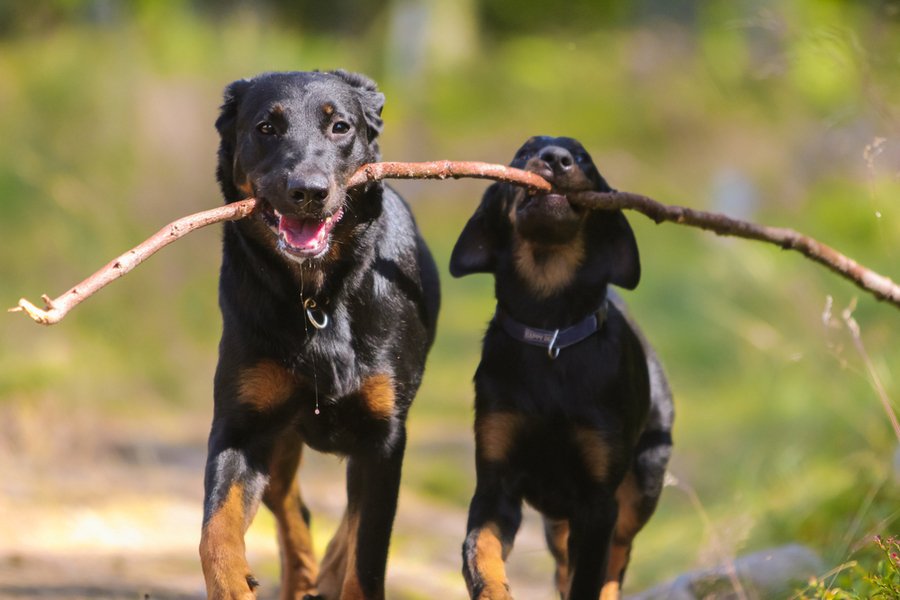
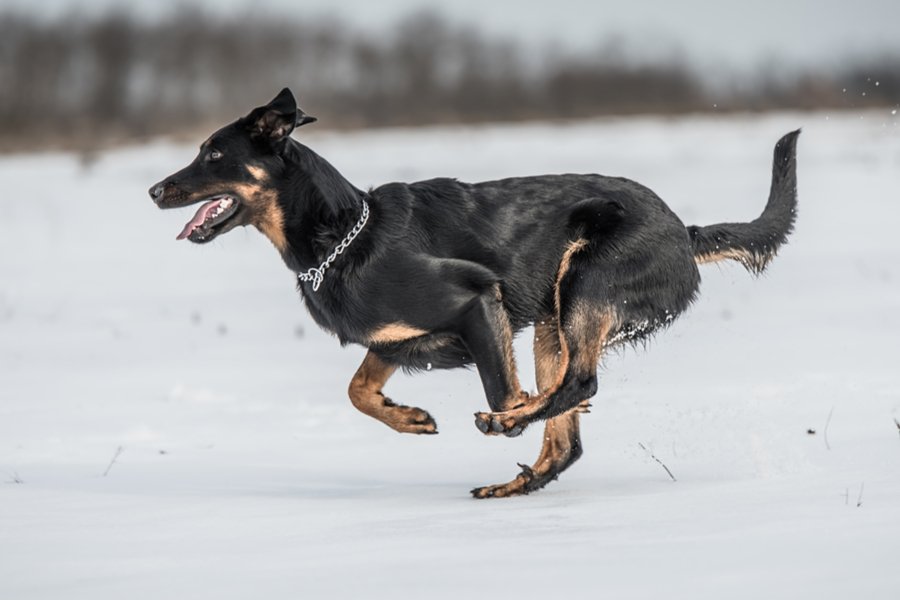
Beaucerons are a slow-maturing breed, so this must be taken into account during training. They don’t fully reach their full mental maturity until they reach around three years old, so training shouldn’t be rushed. Even considering this, they are intelligent dogs, and when handled and trained in the right hands and the right environment, Beaucerons are relatively easy to train. Just make sure that their training sessions are short and engaging. Long, repetitive training sessions will not work for this breed.
Beaucerons do not answer well to harsh methods of training. Positive reinforcement and respect training will ensure you get the very best out of this breed. Furthermore, while they are young, it's important to expose these dogs to a range of environments, people, and other animals to ensure they grow up to be confident, adaptable dogs. These dogs tend to excel in dog sports such as flyball and agility because of their hard work ethic, intelligence, and high energy.
This dog breed has a thick, coarse double coat that sheds throughout the year. Because of this, weekly brushing is needed to keep their coats clean and in tiptop condition. Similar to other breeds, they tend to shed more during Spring and Autumn. Thus, they need more frequent grooming during these times to keep their coat healthy and off the furniture.
Daily dental hygiene is best in stopping tooth and gum diseases and bad breath. However, twice a week brushing is enough to keep any tartar and bacteria buildup at bay. Ask your vet which dental products work best in cleaning their teeth, tongue, mouth, and gums.
Trim their nails regularly to prevent overgrowth which can be painful for your dog. Furthermore, inspect their paw pads to check they are injury free, especially if they have been roaming around outside.
It’s a good idea to check their body over as you groom them for any potential signs of infection or illness. These can include inflammation, rashes, wounds, redness, and hair loss. Your Beauceron’s eyes must be clear, clean, and healthy without inflammation, swelling, or discharge.
Introduce grooming to your Beauceron puppy so they won’t feel anxious about the experience as they grow up. Make grooming sessions a part of their training and don’t forget to offer rewards or praise for good behaviour.
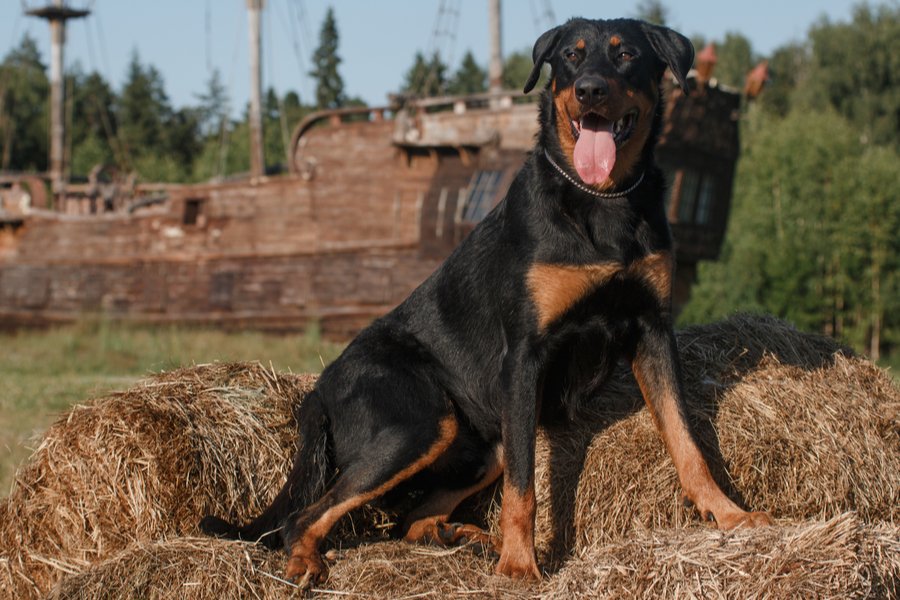
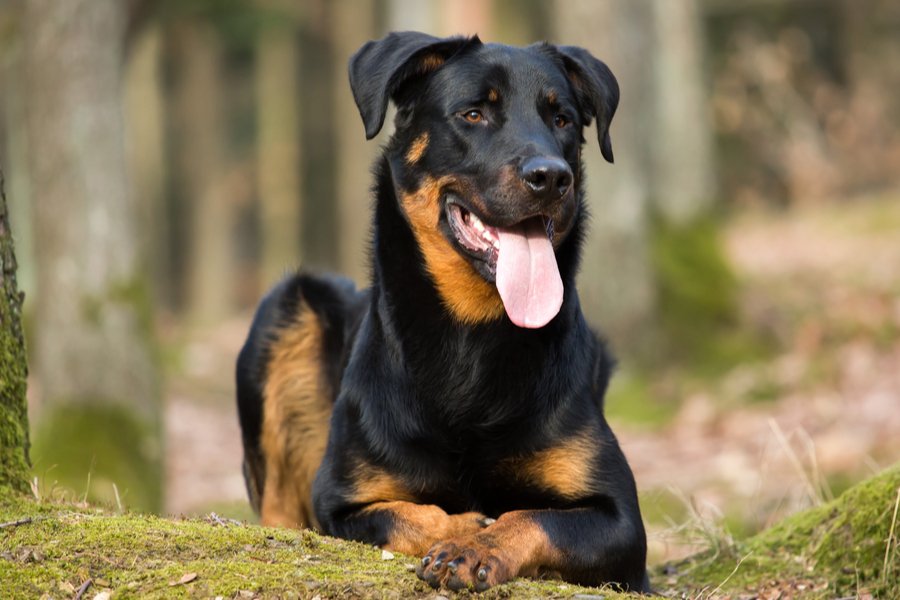
Beaucerons are robust, healthy dogs that can live for 12-13 years if well cared for. Saying that, it’s essential that you buy your puppy from a licensed breeder because they will be able to detect any underlying health issues through DNA testing.
The Beauceron can have some of the health conditions listed below:
The Beaucerons make excellent family pets because of their calm and kind natures. They thrive well in a family environment and love nothing more than to be included in everything that’s going on. But, due to their large size and strong herding instincts, they are better suited to homes with older children. Remember to supervise all interactions between dogs and children to prevent any mishaps.
These high-energy dogs generally get on well with other dogs if they are well-socialised early on in their lives. However, they can remain wary of unfamiliar dogs. Beaucerons have strong prey drives, so they are not best suited to homes with smaller pets such as cats, rabbits, and hamsters.
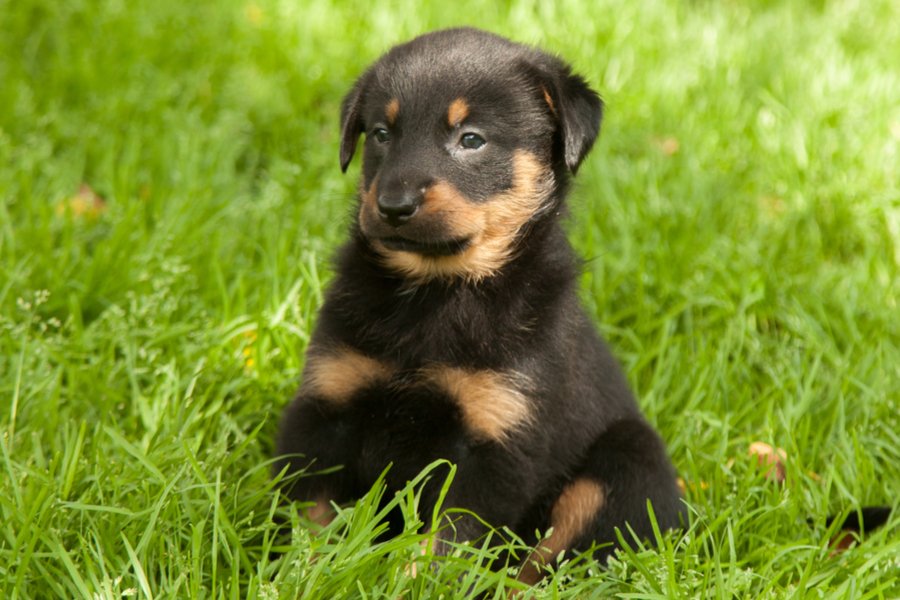
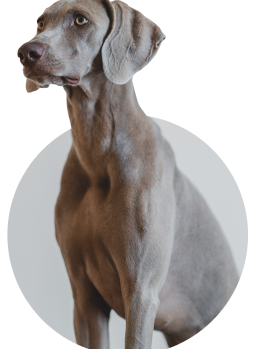
We can connect you with Breeders that are specialized in this particular breed.
See available puppies

Need some advice?
Whether you're a first time pet owner, an experienced pet owner, a new or long-time breeder, or just curious about pets, we've got you covered!
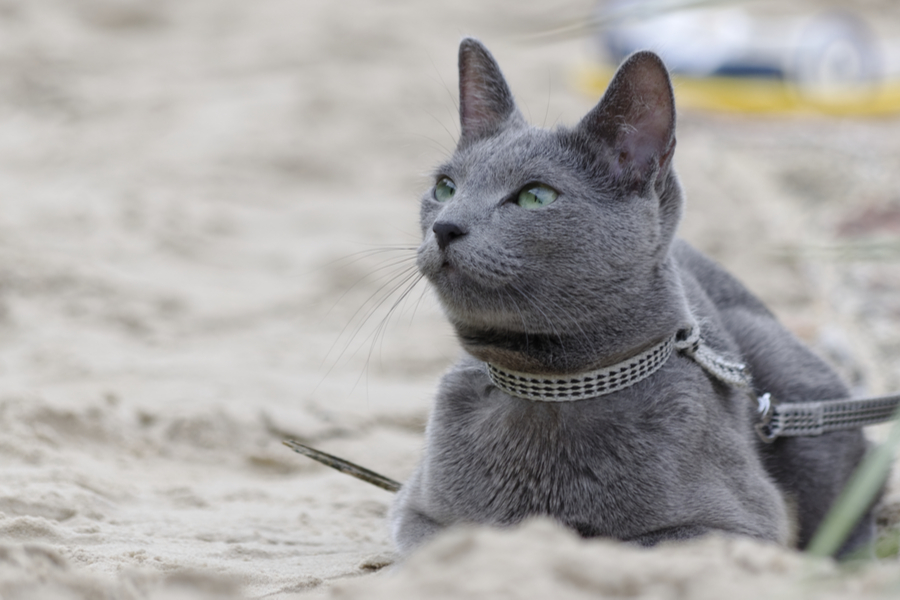
January 17, 2024
What Is The Personality Of Russian Blue Cats?
Russian Blue cats are most known for their distinctive shimmery blue-silver coat and piercing green eyes. However, this breed’s calm and gentle temperament is what makes them shine the most in the feline world.
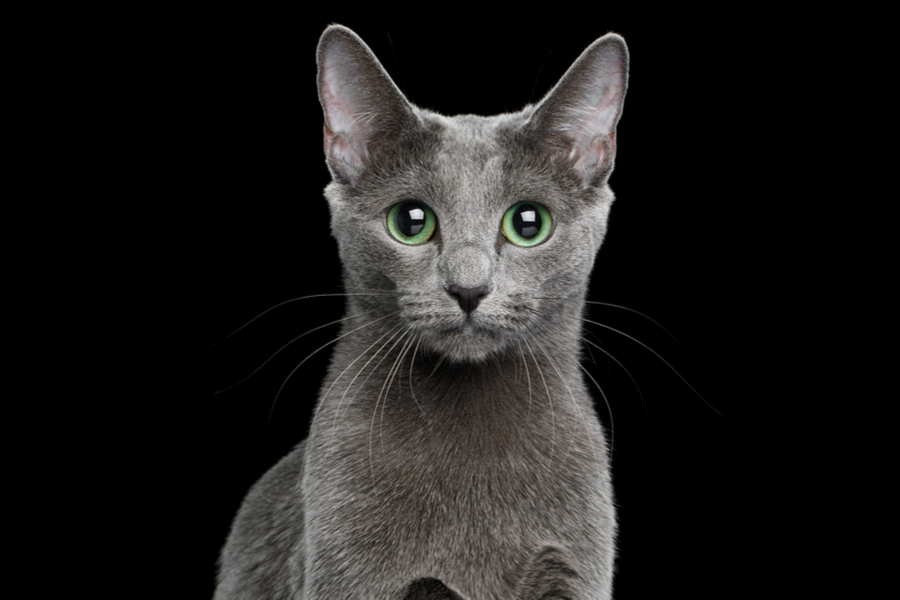
January 17, 2024
10 Facts About Russian Blue Cat Breed
Russian Blues are one of the most aesthetically stunning cat breeds, with a gorgeous plush silvery coat and vibrant green eyes. However, it’s not only their appearance that is beautiful; their nature is too.
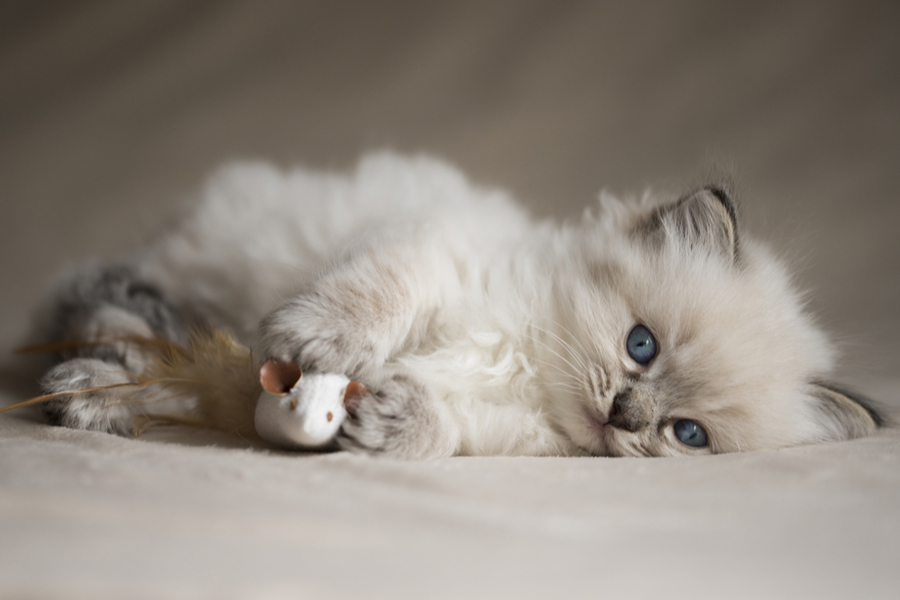
January 17, 2024
How To Choose The Right Cat Breed for You
Cats can make the most fantastic animal companions; they are adorable, friendly, and loving. However, not all felines are created equal. There are many different breeds, of which each has its unique personality traits.
Need some help?
Contact us to speak to our friendly advisor, who will gladly help you find your dream pet!



We are registered in England and Wales under registration number 12568840,
and our registered office is at 58-60 Kensington Church Street, W8 4DB London, England.
© 2023 The Pedigree Paws